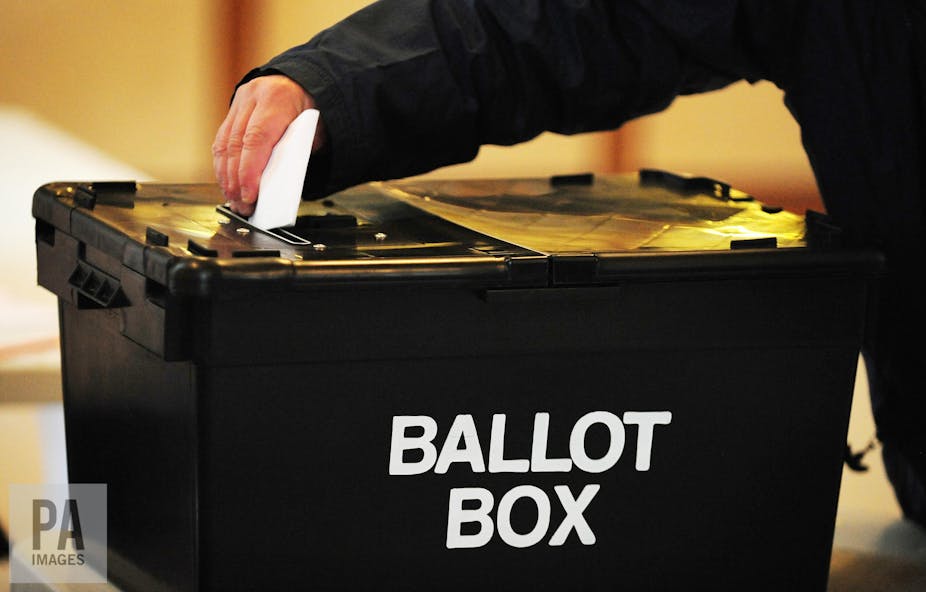Welcome to election day. Whether you choose to stay up until dawn eagerly anticipating the results, or go to bed with your fingers crossed – waking to find out the country’s fate in the morning – chances are you’ll see at least some of the television and online coverage from the big night.
This will include journalists reporting from many of the counts going on around the country. There will also of course be the statutory first result, which is usually Sunderland, as well as those reporters covering seats which either tend to be marginal or which play host to an important candidate. At other times, though, it can seem like a lot of the evening involves people just standing around in sports halls drinking tea out of polystyrene cups.
But despite the mammoth quantities of hot drinks consumed, there is actually a whole lot more going on at an election count than meets the eye. And as someone who has been there and done it – as a serial general election candidate (1997 to 2015) as well as a party helper – let me give you the inside scoop.
How it happens
It starts when the ballot boxes arrive at the count location from the individual polling stations – these can’t start travelling until after the polls close at 10pm.
The first stage is verification: papers are tipped out and counted for each polling district. Counters are checking that the number coming out of the ballot box equals the number that is supposed to be in there.
You will often see crowds of party workers with clipboards and sheets at this point. This is because as the papers are counted and bundled, watchers can get a good idea of the percentage support for each candidate. And combined with turnout information, this begins to give candidates an idea of the likely result.

As long as all the numbers tally, the next stage involves sorting the votes into piles for each candidate. Papers are usually bundled into fifties – which is all done by hand.
At this stage, party activists are checking to make sure that none of their votes go astray. I have personally rescued votes which were about to go into the wrong pile so know how crucial it is in a tight fight to keep an eye on the table.
As the bundles are completed, they are put aside and stacked in piles. This is when the performance of each candidate becomes visually very clear. Postal votes also get counted on election night, and will be added to the stacks.
The whole process can take hours. And if there is more than one contest at the same time – say a local and a general – this can be slower still. But this year, apart from the odd council byelection, the general election vote is on its own – so it shouldn’t be too late to bed for most.
Spoil sports
There are of course always a few ballot papers which are judged unclear, or spoiled. In some cases, this is simply because a voter has used a tick instead of a cross. In other cases, there is no vote, or there is a signature or a slogan of some sort.
Counting staff will go through the uncertain papers with party representatives to make decisions on each – and in a very tight fight, arguments can break out over “ownership” of a ballot paper.
At this point, the Returning Officer – this is the person who is legally responsible – will go through the figures with agents from the parties before any declaration of a result is made.
What about recounts?
Agents may ask for a recount for a couple of reasons, the main one being that their candidate is very slightly behind, and it’s looking like it could be a close call.
Of course, after a long night, the news of a recount isn’t always welcome. Indeed, I once managed to make myself the most unpopular person in the building by asking for one.

There are two types of recount. A bundle check means simply flicking through each bundle to make sure that all the votes in there are for the same party, while a full recount does what it says on the tin. If a recount changes the lead, the now second placed candidate can ask for another one.
And the winner is…
Candidates often turn up to a count when it has been going for a while. Polling day is exhausting enough without having to stand around for hours making stilted conversation. Candidates also prefer to have some idea of their likely fate before arriving.
Of course, on very rare occasions, there can be a tie between candidates, but the bigger the electorate, the less likely this is. A genuine tie would involve drawing lots or straws – which is what two candidates in Northumberland had to do in the recent local elections.

When the results are clear, the Returning Officer will then read these out and declare the winner. There is no automatic right for candidates to make a speech, but it has become customary for the winner and immediate runner-up to say something.
For some candidates, this is a key soundbite opportunity and many will have their victory speeches worked out in advance – you can usually tell who has done this because they still sound quite slick, regardless of the hour or the limited amount of sleep they’ve had.
Then after the celebrations, it’s time for a few hours’ sleep, before the winners head off to parliament. And for the losers? Well, after the commiserations, they’ll most likely go back to the day job.

